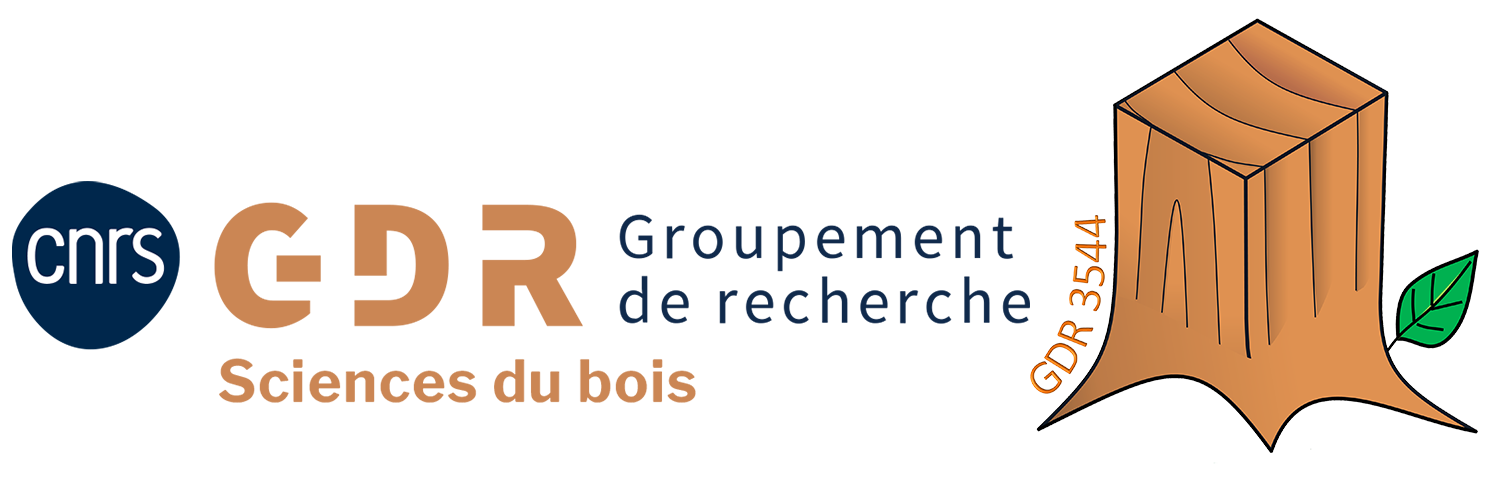DURABILITÉ CONFÉRÉE
Approche physico-chimique de l'étude de la durabilité
QU'EST CE QUE LA DURABILITÉ CONFÉRÉE DU BOIS
La durabilité conférée au bois par une approche physico-chimique fait référence à l’amélioration de la résistance du bois face aux agents biologiques tels que les champignons, les insectes et les microorganismes responsables de la décomposition. Cette approche vise à prolonger la durée de vie du bois en le rendant moins sensible à la dégradation. Il existe différentes méthodes physico-chimiques utilisées pour renforcer la durabilité du bois. Voici quelques-unes des approches couramment utilisées :
-
Traitements en autoclave: Cette méthode correspond à un traitement des bois sous vide-pression par des produits de préservation ayant des autorisations de mise sur le marché (AMM). Elle permet de protéger les bois vis-à-vis des agents biologiques en préventif, pour une application en classes d’emploi 3.2 et 4
-
Traitement en application par trempage et badigeonnage (surface) par des produits de préservation ayant des autorisations de mise sur le marché. Cette méthode permet de protéger les bois vis-à-vis des agents biologiques pour une application en classes d’emploi 1 à 3.1
-
Les produits couramment utilisés sont en général constitués de substances actives insecticides et fongicides ayant différents modes d’action spécifiques qui permettent de protéger les bois.
Quel que soit le procédé d’application, les AMM contiennent des évaluations d’efficacité, de toxicité et environnementales pour un usage donné.
- Modification chimique : Cette approche implique la modification de la structure chimique du bois pour améliorer sa durabilité. Par exemple, le bois peut être traité avec des réactifs chimiques pour former des composés résistants à la décomposition biologique.
- Modification thermique : Cette méthode consiste à exposer le bois à des températures élevées dans un environnement contrôlé, généralement dans une atmosphère sans oxygène. Cela provoque des changements chimiques et physiques dans le bois, augmentant sa résistance à la dégradation.
- Utilisation de produits naturels : Certains extraits de plantes ou d’arbres peuvent être utilisés pour améliorer la durabilité du bois. Par exemple, l’utilisation d’huiles essentielles de plantes répulsives peut aider à prévenir l’infestation d’insectes.
Ces méthodes physico-chimiques peuvent être utilisées individuellement ou combinées pour obtenir des niveaux accrus de durabilité du bois. Il est important de noter que chaque méthode a ses avantages et ses limites, et le choix de l’approche dépendra de divers facteurs tels que l’application prévue, le coût, l’impact environnemental et les réglementations en vigueur.
Joris VAN ACKER
Enhancing resistance against decay and improve fire safety of engineered wood products

Bio-based building products are considered key in our future socio-economic environment, since they are a very relevant nature-based solution (NbS) to climate change. The statement of President von der Leyen (European commission) to turn the construction sector into a carbon sink is critical in this respect: bio-based materials should be used on a larger and more targeted scale in the future. The long-term use of materials is therefore very important since we need to improve the lifespan of renewable materials to increase its carbon sink potential.
Hence wood is increasingly considered as a main building material. Service life aspects are critical in relation to the EU Construction Products Regulation (CPR). Traditional treatments to protect against fungal decay and the impact of fire are not always performing adequately and often environmental impact has been an important consideration. The option to enhance wood properties using innovative technologies can be combined with better definition of the expectations and requirements. Besides focusing on combined innovative treatments of the wood matrix, also envelope treatments similar to the use of coatings can be envisaged. This all should lead to an increased use of timber and engineered wood products for green building. This paper mainly focusses on the increased use and high potential of CLT (Cross Laminated Timber) and options to use hardwoods and modified wood (like TMT) in relation to moisture dynamics to come to fit-for-purpose material properties even under more hazardous circumstances.
CLT has become a commodity construction product for green building and hence options are explored to cover alongside standard product use also enhanced performance based on material properties and a range of technology tools. Enhanced performance is often related to fire safety and extending service life under conditions with more risk of longer time of wetness, use classes 2 and even 3 according to EN 335. Modern decision support systems can be based on a range of parameters and specific for the functionalities fire safety and service life several technology pathways are feasible leading in future to multi criteria decision making (MCDM) tools for CLT applications A first one is based one built in or add on component that lead to enhanced performance like the use of plasterboard to increase fire safety. A second technology tool is protection by design that related to service life mainly focusses on avoiding higher moisture content by including barriers to prevent rain impact during construction and leakage and condensation issues during use. When moving towards use class 3, exterior applications, it becomes more relevant to increase the inherent or natural durability against decaying organisms by adding specific treatments in the range of wood preservation and wood modification. Nevertheless, also impacting on the moisture dynamics can be part of the solution, e.g. by means of coatings. Finally, there is the option to combine both fire and decay resistance with often the critical parameter of fixation of active ingredients. This clearly is a technology tool still to be explored beyond current state of the art, but could bring an extra boost to the use of CLT.
Sandrine BOUQUILLON
Synthèse de liquides ioniques biosourcés pour la dissolution de polymères issus de bois et l’extraction de composés bioactifs

Dans le contexte actuel lié aux questions sur le développement durable, à la disponibilité des matières premières d’origine pétrochimique et à la naturalité souhaitée par les consommateurs, le terme «biosourcé» apparaît de plus en plus. Nous avons développé des liquides ioniques biosourcés qui sont, tout d’abord, préparés selon plusieurs principes de chimie verte, à partir d’agro-ressources qui constituent une alternative innovante et intéressante en matière de sourcing. Ces solvants présentent de faibles toxicités (éco- & cyto-toxicité) et peuvent être utilisés dans la dissolution de biopolymères (cellulose ou lignine Kraft) en vue de les transformer. Ces solvants peuvent également être utilisés pour l’extraction de composés bioactifs, à partir de sourcing végétal.
References
- * J.-P. Mbakidi & S. Bouquillon PCT/EP2020/070365
- * J.-P. Mbakidi, I. Barjhoux, K. Aguibi, A. Geffard, D. Rioult, M. Palos Ladeiro, S. Bouquillon. Synthesis of New Betaine-Based Ionic Liquids by Using a “One-Pot” Amidation Process and Evaluation of Their Ecotoxicity through a New Method Involving a Hemocyte-Based Bioassay. ACS Sustainable Chem. Eng. 2021, 9, 15427.
- * J.-P. Mbakidi, A. Kerkache F. Lazar, S. Bouquillon S. Dissolution of Cellulose and Lignin with Biobased Ionic Liquids. J. Solution Chem. 2022, 51(3): 1.
- * F. Feuzing, J.P. Mbakidi, F. Lazar, L. Marchal, E. Leroy, S. Bouquillon. Biobased ionic liquids as solvents of paramylon. J. Mol. Liquids 2023, 370, 120983.
